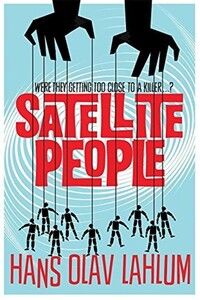The Catalyst Killing | страница 9
This obviously made them fear that he might have fallen, been pushed or jumped off the cliff in the dark, though the latter idea made the students indignant and they dismissed it. The theory that Falko Reinhardt’s life had in some way ended on the stones at the base of the cliff was reinforced when his right shoe was found in the scree later in the day.
The only problem was that no one could find Falko Reinhardt, or any trace of him, even when the area was searched twice by a large contingent from the Home Guard. Dead or alive, the missing man had simply vanished, first from the cabin, and then into thin air.
Falko Reinhardt had taken several language courses at the University of Oslo, but at the time of his disappearance was a good way through writing his thesis for a master’s degree in history. He had written about a Nazi network during the war. A few weeks before he disappeared Reinhardt had told his supervisor, the renowned professor Johannes Heftye, that he had made a remarkable discovery that could indicate that parts of the network were still active.
One of the main leads in the investigation after this was an elderly, wealthy farmer called Henry Alfred Lien, a former convicted Nazi, who had been a member of the fascist Nasjonal Samling in Valdres. According to the thesis, he had been active in the network during the war. However, Lien proved to be ‘extremely uncommunicative’ in his meeting with the police in 1968. He claimed to have been at home on his farm a good few miles away on the night in question, and denied any knowledge of Falko Reinhardt’s disappearance.
He also threatened the police with legal action if anything was said to link his name to the case, so of course that never happened. There was no evidence that Falko Reinhardt had been the victim of a criminal act, and even less that Henry Alfred Lien was involved in his disappearance. To be on the safe side, and at his own cost, Lien had travelled to Oslo and taken a lie-detector test, during which he answered only two questions. The first was whether he had participated in the abduction of a student by the name of Falko Reinhardt. The second was whether he had been involved in the death of a student by the name of Falko Reinhardt. According to the attached certificate, the answer from the lie detector to both questions had been a clear no.
No other suspicious activity had been registered in the area on the night of the storm. A slightly sozzled youth on his way home from a birthday party a few miles further down the valley had tried, without success, to hitch a lift from a car that had sailed past him at high speed around four in the morning. He thought there had only been one person in the car, and his description of ‘a somewhat overweight man or woman of around forty’ was firstly too vague, and secondly bore no resemblance to Falko Reinhardt. As the tipsy young lad could not give a reliable description of either the driver or the car in the dark, his handwritten statement remained a simple appendix in the file.

